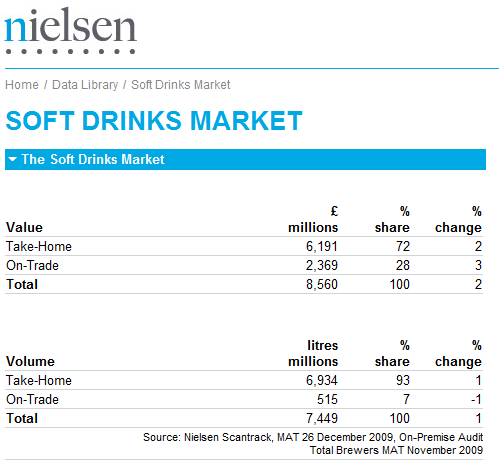Market size and market share
Economies could not operate without the existence of markets.

What is a market?
A market is a place or process which allows buyers and sellers to meet and exchange goods, services and information.
Markets exist to facilitate trade between collections of people who share a want or need and are motivated to enter into exchange processes to satisfy that want or need. Markets can be local, national or international, but the marketing concepts covering all marketplaces are relatively similar Customers for a firm can be private individuals, other businesses or local or central governments.
Markets that cater for private individuals are referred to as consumer markets, while those serving organisations are industrial or commercial markets. It is important to recognise that trade between businesses, commonly referred to as B2B (business to business) is much larger in value than sales to private individuals, but does not attract the same coverage in textbooks.
Write a brief description of the companies below and the markets in which they operate and then follow the link below to compare your answer to ours. If you're not sure who they are then follow the link to their website to see what they do:
Hint
If you look at these sites you will find they are mainly sales sites, but you want company information. When looking at company sites, always look for links on the page that say something like 'Investor information', 'Corporate information' or 'About us'. You will usually find the interesting business information under those headings.
Suggested answers
Market size
 Markets vary enormously in size and are governed by the laws of demand and supply. Obviously very few products are capable of appealing to everyone. Some markets, such as the market for recorded music is huge, whereas the market for competition bobsleds is significantly smaller!
Markets vary enormously in size and are governed by the laws of demand and supply. Obviously very few products are capable of appealing to everyone. Some markets, such as the market for recorded music is huge, whereas the market for competition bobsleds is significantly smaller!
We would say that the market for bobsleds is a niche market appealing to a very small number of potential customers. This type of market is likely to attract small specialist producers. Large companies are likely to ignore these markets because there is insufficient return to justify entry and no opportunities for economies of scale in production.
Various terms are used to describe the market based on the level of narrowing, with each narrowing reducing the size of the market:
- Total population
- Potential market - those in the total population who have interest in acquiring the good or service.
- Available market - those in the potential market who have effective demand - the desire to buy a product backed up the ability to pay for it
- Qualified available market - those in the available market who are legally permitted to buy the product.
- Target market - the segment of the qualified available market that the firm has decided to serve
- Penetrated market - those in the target market who have purchased the product.
Let's look at these concepts in the context of an example. It is important for firms to know the size of market because this information is required to assess whether the market is worth entering and whether it is growing or contracting. Once in the market, a firm will wish to be able to calculate what share of the market its products hold.
Imagine you are thinking of introducing a new shampoo to the market. What would you need to establish to understand the size of the market?
Some markets are not easily measured. For example 'black markets' such as those for drugs, are large in terms of value and consequently attract many buyers and sellers. However, since these are markets for products that are illegal, stolen, or otherwise need to be hidden from regulatory authorities, customers are unlikely to volunteer information about themselves or reveal their market activities!
There three main measures of a market's size. These are:
- The volume of sales
- The value of sales
- The number of customers
Market size by sales volume measures the amount of goods sold by quantity, e.g. bottles of cola. Market size by value measures the amount spent by customers on the volume of goods sold and will be expressed in a currency such as US dollars or Euros. The number of customers is self explanatory.
Value versus volume
A company might sell a large volume of products. However, it may be that the sale price is such that the total value of sales (total sales revenue) is less than a competitor, which sells a smaller amount of a more valuable product.
The following is a summary of the state of the UK soft drink market in 2009 by value and by volume. This chart compares the value of soft drinks bought in shops and taken home compared to the value of soft drinks consumed in pubs, bars and restaurants. When measured by value the take home market is smaller than when measured by volume. This is because consumers pay more for products consumed outside of the home, but indicates the need to be careful when comparing market size.

The same issues apply in other industries. For example, a Paris-based fashion house might only sell a few hundred dresses and gowns in a 'season', but at several thousand Euro per item. Their revenue may be larger than a local fashion shop, which sells many dresses each month, but at a fraction of the price charged by the Parisian designer.
Global car production is an excellent barometer of the state of the world economy and the market size is examined by economists to provide a basis for economic analysis. Below is the global car market measured volume from 2007 to 2009.
Global car production statistics
| Year | Cars | Commercial vehicles | Total | % change |
|---|---|---|---|---|
| 2007 | 53,201,346 | 20,064,715 | 73,266,061 | 5.8% |
| 2008 | 52,726,117 | 17,794,376 | 70,520,493 | -3.7% |
| 2009 | 47,952,995 | 13,761,694 | 61,714,689 | -13.5% |
| source http://oica.net |
A real-time record of car sales can be found here.

- Describe what these figures show for car and commercial vehicle production?
- Analyse these statistics and comment on what they say about trends in the global economy.